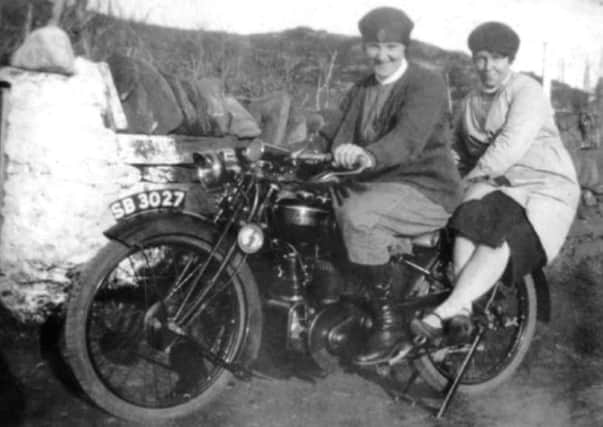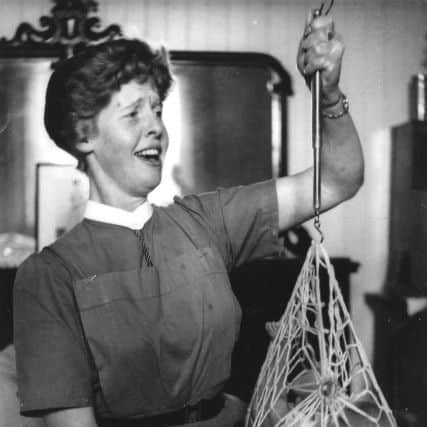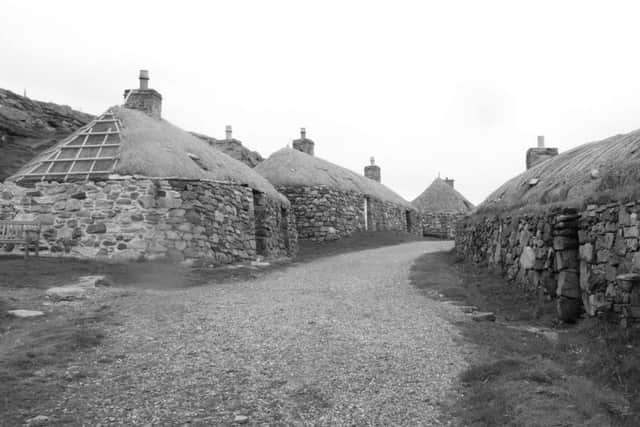The gutsy 'Hebridean Heroines' who inspired the NHS


Now the endeavours of the district nurses working in the Western Isles in the early to mid 20th Century have been recorded for the first time.
The nurses were part of unique social experiment that introduced a state-funded comprehensive health service in the Highlands and Islands 35 years ahead of the NHS.


Advertisement
Hide AdAdvertisement
Hide AdThey were judged to be of “extraordinary pedigree”, most of them having temporarily left their Hebridean homes to train in Edinburgh and Glasgow as Queen’s Nurses, which expanded their clinical skills and gumption in the field.
It was a training that made them fit for surviving in the desert, but on return to island life the young women were faced with a vastly different environment in which to test their resilience.
“Nurses had to have the courage and the physical strength to face the black moor walks at night, exhausting battles with wind and rain and journeys by small boats across stormy seas.


“It was the way help must come to save the patient, it was given without hesitation, recalled Christine MacLennan, a former district nursing officer who served until the 1970s.
Advertisement
Hide AdAdvertisement
Hide AdLong, often hazardous journeys were made to see patients, including storm-hit trips on boats to lighthouses and fog-ridden walks on coastal paths. Horses and motorbikes were used by some of the women, who would often act as GP, nurse and midwife - to get around.
Nursing accommodation was poor, with rats a problem for some, nurses not spared the need to fetch water from a well or light a peat fire after work. Electricity was not in place for the majority of the islands until the 1950s.
One nurse, Rhoda, recalled a difficult call out to a traditional blackhouse, where families lived under the same roof as their livestock.


A girl, aged two or three, had fallen into a pot of soup, with the resident calf proving a welcome distraction for the distressed child.
Advertisement
Hide AdAdvertisement
Hide AdRhoda said: “I was called out to a young girl. She was running around at that stage, maybe two or three years old, and she fell into a pan of hot soup.
“They had taken the pan off the fire, and placed it on the floor as they usually did, and the wee
one was running around and she fell into it. She burnt the whole of her back and word came for me to call.


“The wee girl did not want anyone near her or to touch her and when I saw the condition that she was in I understood why.”
Advertisement
Hide AdAdvertisement
Hide Ad“The young girl cried for the calf and she was taken to see the beast by her grandfather.
“That is how I managed to dress her wounds. By her patting the calf as I was dressing her burn at the same time, it took her attention away from what she was suffering,” the nurse recalled.
The Highlands and Islands Medical Service (HIMS) was set up in 1913 after the Dewar Report found poor care and treatment and in some cases, no care at all.
A solution was sought given that large number of crofters and fishermen received no wages and were unable to qualify for the National Health insurance Scheme of 1912.
Advertisement
Hide AdAdvertisement
Hide AdWithin a few months of the Dewar report, the Treasury agreed to provide an annual grant of £42,000 to fund HIMS the equivalent to one shilling and sixpence for each member of the population.
Catherine Morrison, author of Hebridean Heroines described the impact of The Dewar Report as “seismic” with HIMS to inform the setting up of the NHS in Scotland in 1948.
“The Secretary of State for Scotland introduced the NHS (Scotland) Bill in the House of Commons in 1946 by informing the House that the HIMS had provided the necessary pointers towards a comprehensive service for the whole country,” Morrison said.
The service of the Queen’s Nurses was also to inspire nursing in some of the world’s remotest places, from frontier land in the United States to Newfoundland in Canada and the Australian Bush,.
Advertisement
Hide AdAdvertisement
Hide AdIn 1924, American nurse Mary Breckinridge visited the Hebrides to find a model for a new nursing service she was planning the remote areas of Kentucky in the 1920s at a time when training for midwives was non existent.
Back in Kentucky she set about organising what became the Frontier Nursing Service (FNS). Scottish nurses of an “adventurous spirit” were encouraged to join and Queen’s Nurse Annie P Mackinnon from Skye was one of its first recruits.
She later became known as Ann of Appalachia and rode a mule called Tenacity to work.
- Hebridean Heroines by Catherine M Morrison is published in February by Islands Book Trust.
